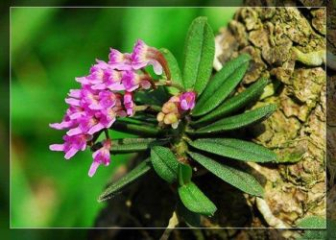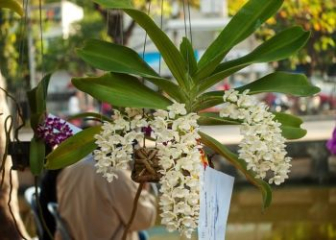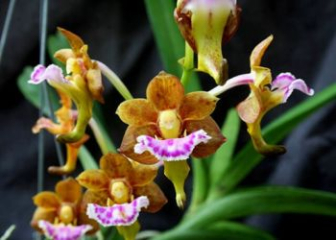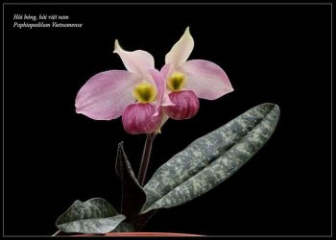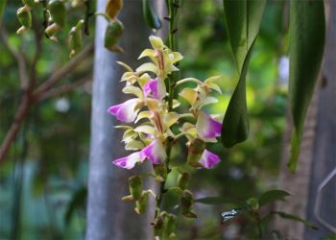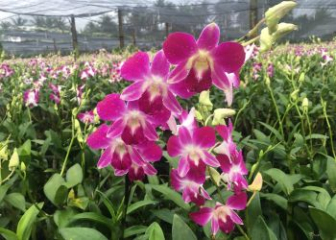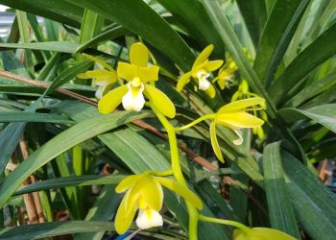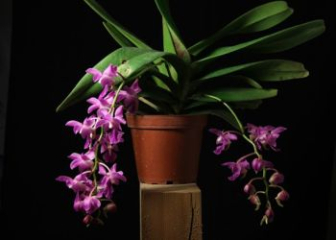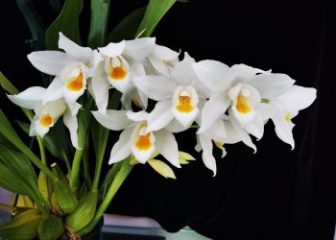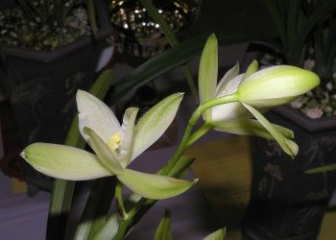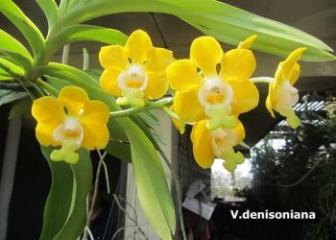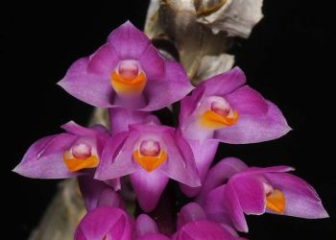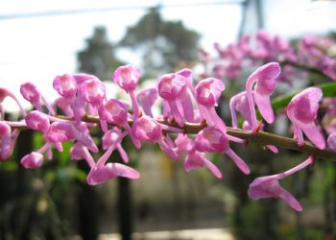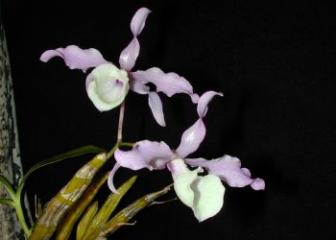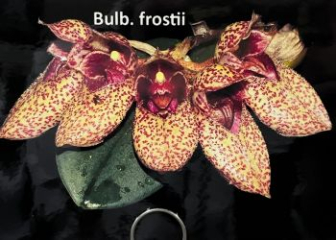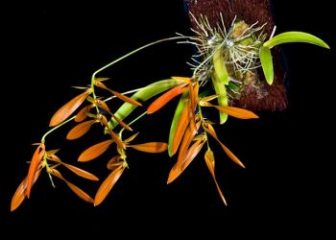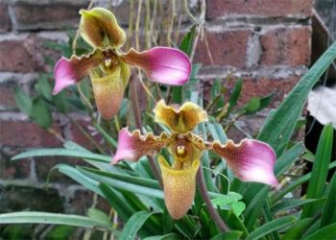Purple Dendrobium Orchid - Origin, characteristics, habits & how to grow
Blog | by
Purple orchid (Pink Cymbidium) is a popular wild orchid, with light purple flowers, orange-yellow throat, light fragrance and very easy to grow.
Purple orchid (scientific name: Dendrobium amabile) is one of the most popular wild orchids in Vietnam thanks to its gentle beauty, elegant color and light, pleasant fragrance. Not only does it have a charming beauty with light purple flowers, but Dendrobium amabile is also very easy to grow, completely suitable for those who have no experience in growing orchids.
In today's article, let's learn about purple orchid with wild orchids to help you better understand this flower and consider whether to choose this wild orchid to add to your orchid collection.
Origin and distribution of purple orchid
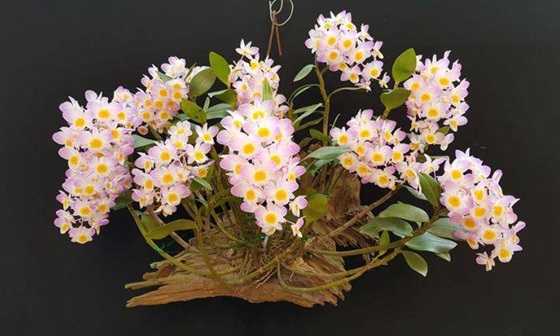
Purple Cymbidium is a wild orchid species common in Southeast Asia.
Purple Dendrobium orchid has the scientific name Dendrobium amabile, belongs to the genus Dendrobium, is a wild orchid species native to Southeast Asia, commonly distributed in the following countries:
- Vietnam : Northern mountainous provinces such as Lao Cai, Ha Giang, Lai Chau, Son La,...
- Laos, Thailand, Cambodia,...
Purple Cymbidium was first scientifically described in 1851 by Western botanists. In Vietnam, purple Cymbidium is known by many popular names such as pink Cymbidium, fat Cymbidium, pink Cymbidium, pink Cymbidium,...
In nature, this orchid species often lives epiphytically on large trees in dense forests with high humidity, has a clear distinction between the dry and rainy seasons and only receives scattered light.
Morphological and growth characteristics of purple orchid
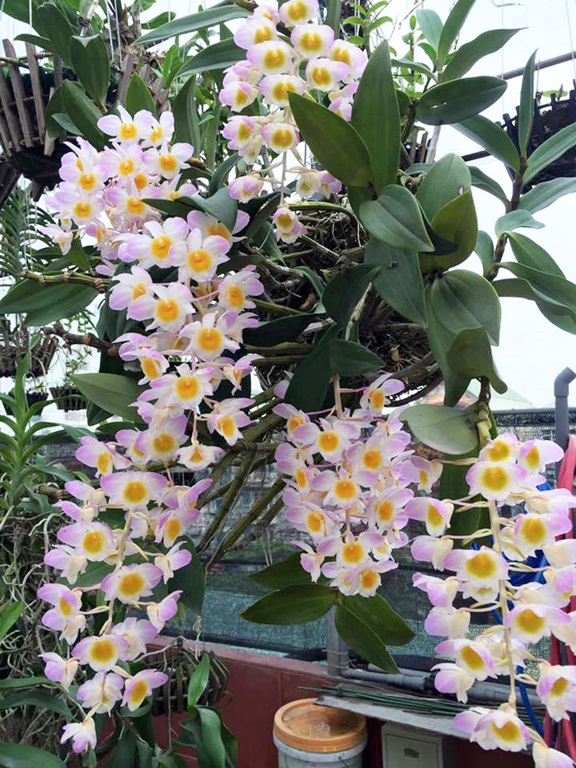
Shape of stem, flower and leaves of purple orchid.
Please join us to learn in detail about the morphology and growth characteristics of the Dendrobium orchid to easily distinguish this orchid species among hundreds of other species in the Dendrobium genus.
Close :
- Pseudobulb, cylindrical, thick, bulging in the middle, about 30 - 50 cm long,
- Has a brown, blue-black or golden hue when viewed in sunlight.
- The stem is drooping or slightly curved, and can grow singly or in small clumps.
- As you get older, your body will shrink and become rough.
Roots :
- Root form, greenish white.
- Strong roots
Leaves :
- Grows alternately, mainly from the middle of the stem up.
- Leaves are stiff, 9 - 11 cm long and 5 - 7 cm wide.
- Leaves do not fall to nourish the stem and stimulate flowering like many other orchid species, but will remain lush all year round.
Flower :
- Flowers grow in clusters 20-30 cm long, hanging down.
- Each cluster usually has 15 - 30 small flowers.
- The petals are round, thick, usually light purple-pink, the flower throat is bright yellow, the flower lip is large, wide, has fine hairs and many longitudinal veins.
- Flowers have a sweet, pleasant fragrance.
Biological characteristics :
- It is an epiphytic orchid that lives on wood or substrate.
- Grows vigorously in spring - summer, needs to rest in winter to prepare for flowering.
Techniques for growing and caring for purple orchids from A to Z
Instructions for growing purple orchids properly.
Purple Cymbidium is one of the orchids that is quite easy to grow thanks to its strong vitality and healthy roots. Therefore, to help them grow well and bloom, you just need to pay attention to some basic techniques below.
Choose purple orchid variety
If you want the purple orchid to grow well, you need to choose a good orchid variety. Here are some things to note when choosing a purple orchid variety:
- Choose plants with plump, unwatered stems.
- Leaves are not spotted or yellowed.
- You should choose purebred varieties instead of those harvested directly from the forest for easier care.
Prepare growing medium for purple orchid
Purple Cymbidium orchids can only take root quickly and grow well when planted in a suitable substrate. You can plant this orchid with some common substrates as follows:
- Driftwood : The most difficult method of planting but the most effective. Before planting, soak the driftwood in lime water for about half a day to remove pathogens.
- Pine bark, coal : Simple, effective and cheapest planting method.
- Moss, fern : Plants grow well in the dry season but are susceptible to fungal diseases in the rainy season.
- Coconut fiber : Cheap, easy to find but easy to rot.
Note : Each substrate has its own advantages and disadvantages, but you need to soak and wash them to remove impurities before planting orchids.
Techniques for grafting and growing purple orchids
The best time to plant purple orchids is in late winter - early spring from January to March. The steps to plant and graft orchids properly are as follows:
- Disinfect orchid seedlings by soaking the plants in a diluted Physan 20 solution.
- Cut off damaged roots and yellow leaves, leave the plant in a cool place for 1 day to drain completely.
- Fix the purple orchid to the substrate so that the roots are in contact with the substrate, fix with nylon wire or zip ties.
- Place the pot in a cool, airy place for about half a month for the plant to recover and start to grow.
How to take care of purple orchid daily
To help your purple orchid grow best and bloom soon, you need to pay attention to daily care. Specifically as follows:
Light :
- Purple Cymbidium is a plant that likes diffused light, so if planted outdoors, it needs a net to block the light.
- Hang orchid pots in cool places
Temperature - humidity :
- Maintain temperature between 18 - 30 degrees Celsius
- High humidity from 70 - 90 degrees C
How to water purple orchids :
- Dry season (sunny season): Water 1 - 2 times/day, do not water at noon.
- Rainy season: reduce watering frequency, only water when the substrate is dry.
- Winter (dormant period): Limit watering to stimulate flower buds.
- Note to use water source that is not contaminated with alum or salt, best pH from 5 - 6.
Fertilize in stages :
- Development stage: Use NPK 30-10-10 fertilizer or diluted organic fertilizer at ⅓ recommended dose, water every 10 days.
- Flowering preparation stage (November - January): Stop fertilizing, reduce watering to let the plant rest before flowering.
- Flowering stage (March - April): Fertilize with NPK 10-30-20 to help flowers have beautiful color and last long.
Disease prevention for purple orchid
Here are some common diseases in purple orchids and effective ways to treat and prevent them. Let's take a look.
|
Common diseases |
Token |
How to handle |
|
Purple orchid has root rot |
Roots are waterlogged, black, and have a foul odor. Often occurs during the rainy season when the roots are wet for a long time. |
Spray antifungal medication such as Ridomil Gold at the recommended dosage |
|
Purple orchid has leaf burn and leaf spots |
Orchid leaves appear brown, yellow spots and gradually spread |
Remove diseased leaves to prevent spreading. Spray Benkona or Nano Silver |
|
Purple orchid has mealybugs and thrips |
Mealybugs and thrips cling to dormant buds, bases or leaf axils, causing white, cottony patches. |
Use 70 degree alcohol to wipe leaves, roots and stems. Use Movento or Confidor. |
Distinguishing between purple orchid and Long tu orchid
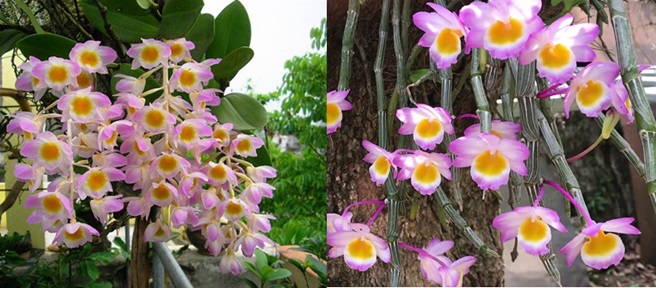
Purple Cymbidium and Cymbidium orchids.
Nowadays, many people mistakenly think that the purple orchid and the Long Tu orchid are the same because they have quite similar appearances, but in fact these are two completely different orchid species, specifically as follows:
|
Distinguishing features |
Purple Orchid |
Lan Long Tu |
|
Scientific name |
Dendrobium amabile |
Dendrobium primulinum |
|
Orchid group |
Kieu Group |
Dendrobium orchid group |
|
Close |
Fat, round, 30 - 50 cm long |
Up to 1m long, thinner, often with purple stripes or brown spots |
|
Leaf |
Long, thick, sparse on the upper half of the body |
Thinner, growing more along the stem |
|
Flower |
Flowers grow in clusters Purple pink flowers, yellow throat Smaller flowers with size 3 - 4 cm |
Flowers grow from the stem axils, discretely, not in clusters. Flowers dark purple or light purple, dark purple throat Larger flowers with size 5 - 6 cm |
|
Fragrance |
Fragrant, gentle |
Fragrant, sweet |
|
Flowering time |
March - May |
February - April or March - June, depending on the variety |
Meaning of purple orchid
Purple orchid not only possesses a gentle, soft beauty, but it also has many meanings in culture, feng shui and love. Let's find out right below.
- Symbolizes gentleness, loyalty and sophistication.
- It is a symbol of enduring vitality and the will to overcome difficulties and challenges.
- Symbolizes nobility and peace with a simple life.
- In feng shui, purple orchids are considered to attract positive energy because the purple color helps relieve stress and increase creativity.
- Purple orchids also often represent wishes for loyalty and longevity in love.
How much is purple orchid?
Depending on the origin and age, the price of purple orchids will vary, ranging from a few hundred to a few million VND. Let's find out the details below.
Purple orchid
- Purple Cymbidium orchid seedlings : 500,000 - 700,000 VND/plant, usually consists of 1 - 2 stems, 30 - 40 cm high, strong roots, many dormant buds.
- Mutated purple orchid, long stem, large flowers : 1,000,000 - 2,000,000 VND/plant.
- Mature purple orchid, large plant with 3 - 5 stems : 1,500,000 - 3,000,000 VND/plant.
Currently, on e-commerce platforms such as Lazada, Shopee, Tiki often sell purple orchids at cheap prices from only a few tens of thousands, however, these sources of goods will often not guarantee quality, so you need to consider carefully before buying.
Questions and answers about purple orchid?
What month does purple orchid bloom?
Purple Cymbidium usually blooms from March to May, depending on climate conditions.
Is purple orchid fragrant?
Purple orchid is a species of orchid with a very pleasant fragrance but leaves a deep impression.
Is purple orchid easy to grow?
Yes, purple orchids are very easy to grow, do not require complicated techniques, just need to meet the principles of ventilation, avoid harsh sunlight, enough water and have a dormant cycle for the plant to bloom in season.
How can purple orchids be propagated?
Normally, purple orchids are propagated by separating bushes or growing buds from dormant buds.
Beautiful purple orchid pictures
Let's admire the entire collection of super beautiful heart-shaped orchids that we have shared below to understand why this orchid with a gentle purple-pink color is so loved by many people.
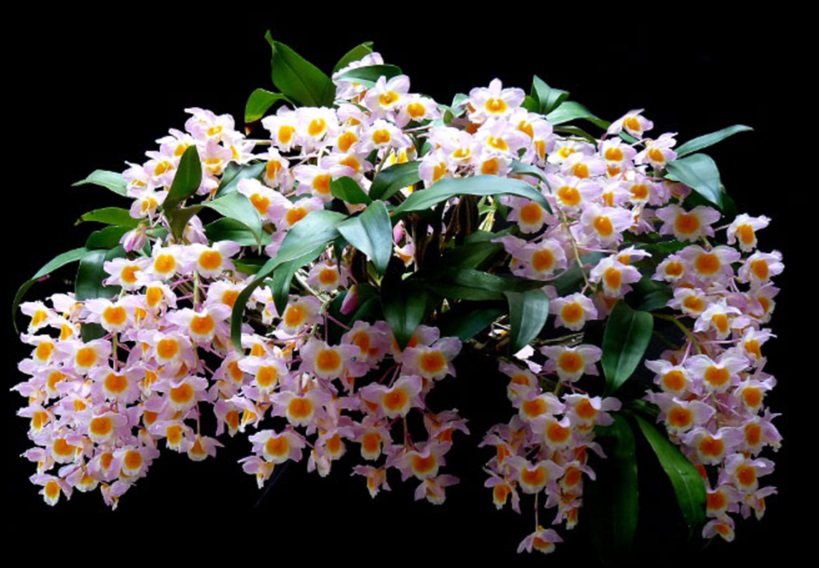
A huge pot of purple orchid with lots of flowers.
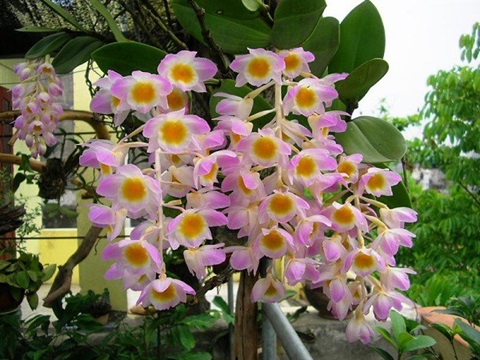
Close-up of purple Cymbidium orchids with soft, beautiful colors.

Yen Tu purple orchid with super beautiful colorful colors.
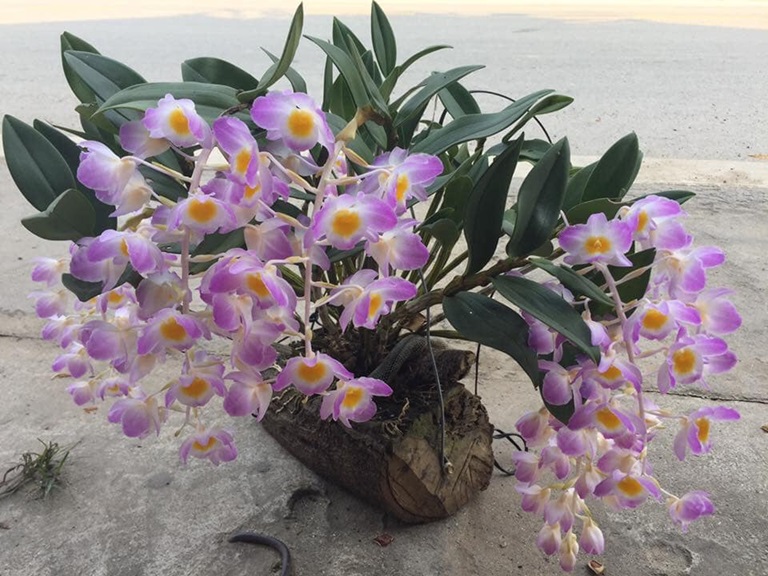
A purple orchid pot grafted on a beautiful wooden trunk.
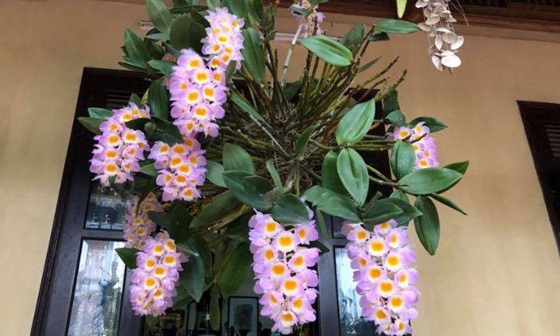
The pot of Thai purple orchid is blooming.
Thus, above orchid-vn.com has shared detailed information related to the purple orchid from its origin, characteristics to planting and care techniques. Hopefully you will pocket many valuable tips and experiences to be successful with this gentle-looking wild orchid.
Don't forget to follow our Blog section regularly to discover more orchid species as well as other effective orchid growing techniques.
